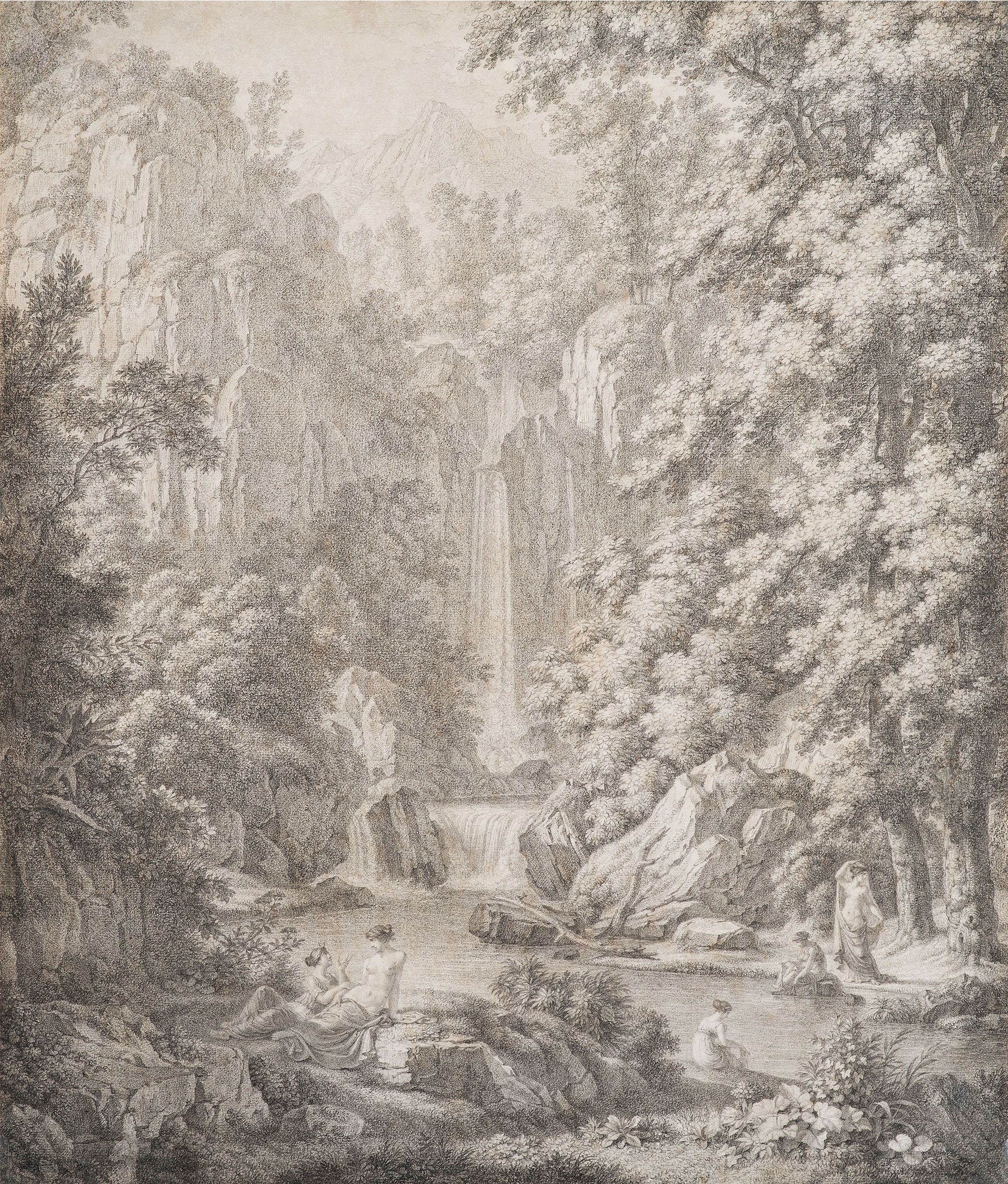
Kniep
Christian Heinrich
The nymph Callisto seduced by Jupiter in the guise of Diana, in a landscape of waterfalls
Graphite.
640 x 54,5 mm (25 3/16 x 21 7/16 in.)
This German artist, trained as a theater set painter in Hanover and then as a portrait painter, moved to Rome in 1781, where he turned to vedute and landscape drawing. Through his compatriot and painter Johann Heinrich Tishbein, he met Goethe, whom he accompanied on his trip to Naples and Sicily in 1787-1788, becoming his drawing teacher. Goethe used some of Kniep’s works to illustrate his Voyage en Italie (1816-1817). Kniep did not return to Rome with the poet, preferring to settle in Naples, where he remained for the rest of his life.
He drew architecture and vegetation with great precision, omitting no detail of foliage, rock or topography. Our spectacularly large sheet depicts the episode from Ovid’s Metamorphoses in which Jupiter seduces the nymph Callisto in the guise of Diana, while the other companions of the huntress goddess quietly bathe. It can be compared with a number of works drawn by the artist, including sheets in the Cooper Hewitt Museum in New York, most of which are signed on their original mounting, and dated and located around the beginning of the 19th century in Naples.
For a more precise comparison, we can cite a drawing depicting a female figure wrapped in classical garments lamenting in a landscape, perhaps Sapho, dated 1824 (Inv. 1938-88-6507) and another depicting a fisherman and a woman seated in a grotto in front of the seaside, with boats and ships in the background (Inv. 1938-88-6506). One is a subject taken from ancient literature, the other a picturesque one. Both have the same characteristics as our sheet: a light graphite pencil with a soft tint, an extremely precise line, a profusion of plant and mineral details, simplified faces and anatomical figures, whose poses are reminiscent of sculpture. The influence of ancient statuary is indeed perceptible in the highly structured bodies of the female figures; for example, the artist cites Callimachus’ Venus genitrix, known from a Roman copy (Paris, Louvre Museum), and adapts it to the theme of the bath, reversing the chiasmus.
Kniep’s drawings are highly structured and his landscapes observed analytically, as if they were architectures, and rendered in volumes and ornamentation. Monochromy is another of their common features, accentuating their mineral aspect. Kniep sometimes uses sanguine, but does not mix it with black chalk or graphite. He also produced a number of meticulous pen-and-watercolor views of ancient architecture.
His pen and wash studies, such as Harvest in the Gulf of Naples (Metropolitan Museum, New York, Inv. 2009.404) and sanguine studies (several epitaph studies that have come up for sale in recent years) offer, despite the difference in medium, characteristics in common with those of his graphite or black chalk studies, particularly the same precise, meticulous and confident neoclassical vision.

